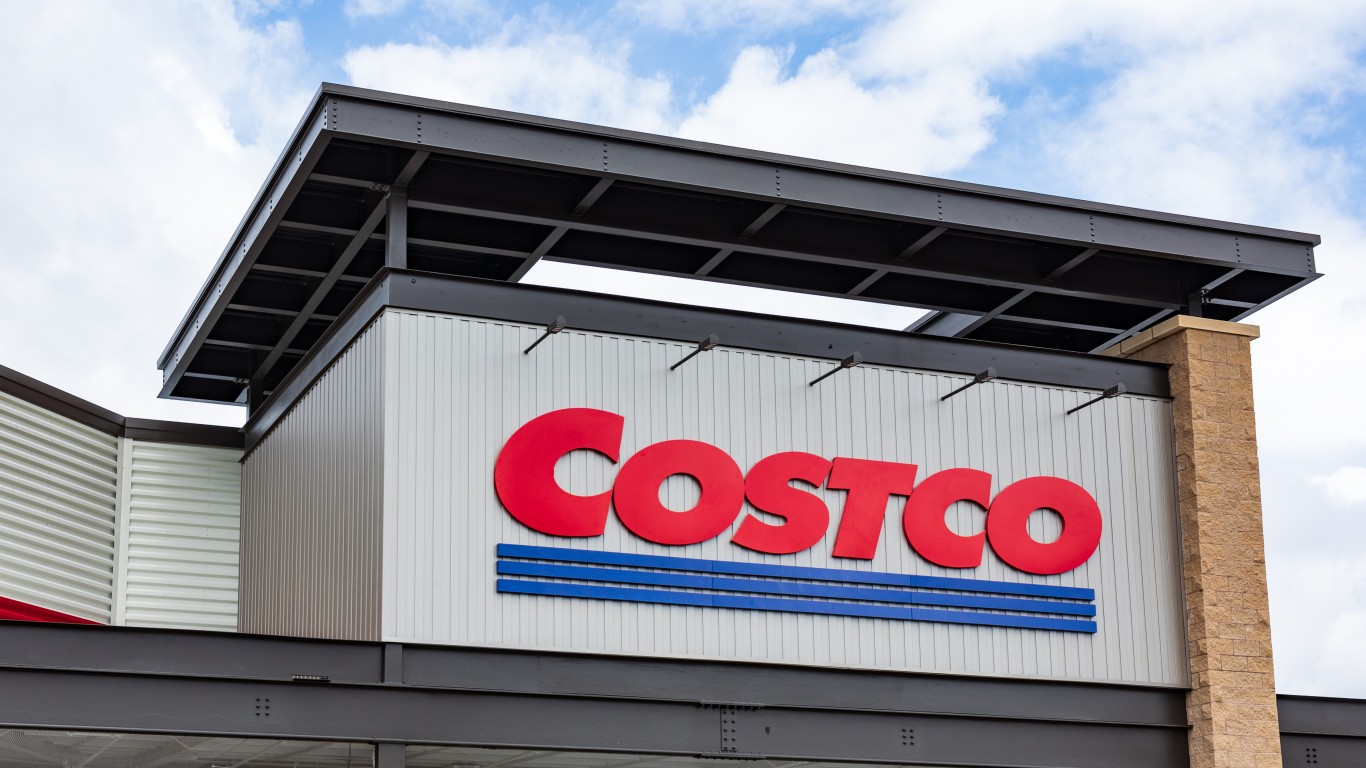
Based on a total U.S. population of nearly 317 million people, there are 1.5 Walmart stores for every 100,000 people in the country. But where those stores are located is a problem Walmart needs to overcome if it is going to post sales growth in the American market. In four large population states, the number of Walmart stores per 100,000 people is about half or less than the 1.5 national average. Unless Walmart can boost its market penetration in these four states, the company will continue to stagger as it tries to increase revenue.
In New York, Walmart operated 117 stores at the end of its 2014 fiscal year in January, or just 0.6 stores per 100,000 population. There are nearly 20 million people living in New York state and more than 8.4 million in New York City alone. The company operates no stores in New York City, where the city council recently sent Walmart a letter telling the company to stop donating money to the city’s charities. Even ignoring New York City, Walmart still operates only about 1.0 store per 100,000 population in the rest of the state.
Walmart operates 284 stores in California, ranking the state behind only Texas (499 stores) and Florida (319 stores). But California is the most populous state in the country, with more than 38 million people, and just 0.7 Walmart stores per 100,000 population. A Walmart Neighborhood Market opened in Los Angeles’s Chinatown last September, joining the city’s only other Walmart store, which is located on the city’s south side. San Francisco, like New York, essentially has banned the company from moving in, and there are just four stores in San Diego, the state’s second largest city, or about 0.3 stores per 100,000 people.
ALSO READ: America’s Most Popular Stores
The 14th most populous state in the country is Massachusetts, and Walmart can claim just 0.7 stores per 100,000 population in the state. The state is home to 6.7 million people, of which about 4.5 million live in the Boston metropolitan area. There are a mere 50 stores in all of Massachusetts, and Boston has no Walmart stores, although there are about 15 or so in the surrounding area. Residents in Boston’s suburban city of Somerville even rejected a smaller Neighborhood Market over the support of local government officials. In a survey last year, most Boston residents would rather see a casino in their city than a Walmart.
The fourth state that needs to get some attention from Walmart is New Jersey, the country’s 11th most populous state, with more than 8.9 million people and just 67 Walmart stores. That works out to 0.8 stores per 100,000 population, slightly more than half the 1.5-store average. The largest city in the state, Newark, with a population of around 280,000, has no Walmart stores, although there are stores in the surrounding area.
Texas, the second most populous state in the country, has the largest number of Walmart stores in the country and logs 1.9 stores per 100,000 people. Houston, the state’s largest city, and the surrounding metropolitan area are home to 33 Walmart stores, more than either of Connecticut or New Hampshire, and nearly 30% as many as the entire state of New York.
The state with the highest penetration of Walmart stores is Arkansas, the home of the company, where there are 3.6 Walmart stores per 100,000 people. The fact is that the closer a state is to Arkansas, the greater the likelihood that it will have a higher penetration of Walmart stores. Oklahoma, Kansas, Alabama and Mississippi all have 2.5 or more Walmart stores per 100,000 population.
ALSO READ: States With the Strongest and Weakest Unions
But the five states with the highest density of Walmart stores are not among the country’s most populous, and the company cannot expect these welcoming states to provide more growth. Walmart has to go where the people are, and those states, especially their large metropolitan areas, have not been warm and friendly to Walmart.
The company has tried opening small-format stores like the Los Angeles Chinatown store, but New York and San Francisco want nothing to do with those either. Even if Walmart could open these smaller format stores in major cities, the company would have to open dozens of them to equal the revenues from just a handful of its supercenters. Logistical problems multiply, and there is no guarantee that the small stores could maintain the same low prices that the huge stores do, which would eliminate one of Walmart’s biggest attractions for shoppers.
The company also has been reasonably successful with its e-commerce initiatives and is regularly among the top 25 most-trafficked websites. At the end of its 2014 fiscal year this past January, Walmart’s online sales growth surpassed that of Amazon.com Inc. (NASDAQ: AMZN). Global Internet sales at Walmart rose 30%, compared with 20% growth at Amazon. Of course, Amazon’s total online sales of nearly $68 billion dwarfs Walmart’s total of $10 billion, but it is unlikely that Amazon will sit still and watch its market share erode. If there’s one company Amazon cannot afford to let run wild on its turf, that company is Walmart.
Smaller stores, e-commerce gains and international expansion will not do the job for Walmart. Revenue and profit growth depends on opening more supercenters in the large U.S. states and cities that have so far resisted the company’s attempts. Not only has Walmart not demonstrated yet that it knows how to make this breakthrough, it has shown quite the opposite. Walmart’s U.S. growth prospects are little better than poor.
ALSO READ: Ten Companies With the Least Valuable Workers
Take Charge of Your Retirement In Just A Few Minutes (Sponsor)
Retirement planning doesn’t have to feel overwhelming. The key is finding expert guidance—and SmartAsset’s simple quiz makes it easier than ever for you to connect with a vetted financial advisor.
Here’s how it works:
- Answer a Few Simple Questions. Tell us a bit about your goals and preferences—it only takes a few minutes!
- Get Matched with Vetted Advisors Our smart tool matches you with up to three pre-screened, vetted advisors who serve your area and are held to a fiduciary standard to act in your best interests. Click here to begin
- Choose Your Fit Review their profiles, schedule an introductory call (or meet in person), and select the advisor who feel is right for you.
Why wait? Start building the retirement you’ve always dreamed of. Click here to get started today!
Thank you for reading! Have some feedback for us?
Contact the 24/7 Wall St. editorial team.



